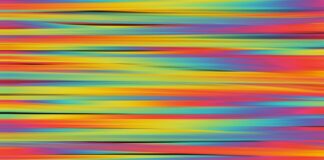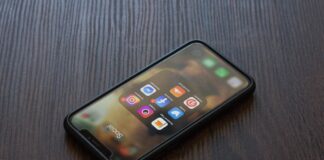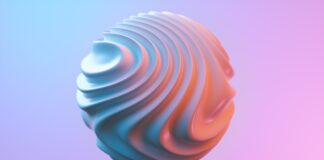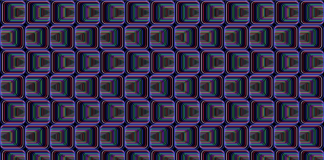The intersection of Artificial Intelligence (AI) and the arts is an evolving and dynamic landscape, dramatically influencing the way we experience, create, and consume art. How AI is changing arts and culture news is a topic that is rapidly gaining importance in today’s tech-driven world. AI in the arts and culture news is not just about automation or data analysis, but about fostering creativity, altering artistic practices, and transforming how stories are told. From music production to visual arts, AI is making waves, bringing forward innovative methods of creation and pushing boundaries in ways that were previously unthinkable. The integration of AI in the arts is bringing about a transformation that both challenges traditional notions of art and opens new possibilities for artistic expression and storytelling. In this article, we’ll explore the ten most crucial things you need to know about how AI is reshaping arts and culture news, from the impact on artistic creation to its influence on how art is consumed and appreciated.
1. AI Will Change the Creation of Art and Performance
Artificial Intelligence has already started to make its mark on the way art is created. From generating music to producing paintings, sculptures, and digital installations, AI is becoming a collaborative tool for artists. Machine learning algorithms and neural networks enable the creation of new forms of art that challenge conventional definitions. AI-generated artwork can mimic the styles of famous artists or even create entirely original compositions. In the realm of performance arts, AI is being integrated into stage productions, where virtual performers, interactive exhibits, and AI-driven choreography are gaining popularity. By offering artists new ways to experiment, AI is pushing the boundaries of artistic creation, allowing them to explore new techniques and forms of expression that were previously impossible. AI in the arts is not a replacement for human creativity but rather a tool that enhances and augments artistic practices.
2. AI Will Revolutionize Art Curation and Exhibitions
AI’s impact on art curation and exhibitions is already being felt in galleries and museums worldwide. AI can analyze vast amounts of art data to identify patterns, trends, and relationships between works, making it easier for curators to select pieces for exhibitions. For example, AI can track how artworks relate to each other in terms of style, subject matter, and historical context, enabling curators to create more compelling narratives within their exhibitions. AI-powered systems can also provide personalized recommendations to visitors, enhancing their experience by suggesting artworks based on their preferences and previous interactions. AI is also used in virtual exhibitions and digital galleries, offering new ways to display and experience art. The potential for AI to revolutionize curation is vast, creating opportunities for museums and galleries to engage with audiences in new and innovative ways.
3. AI Will Impact Art Market Trends and Valuation
The integration of AI in the art world is not limited to the creative process but extends to the business side of the industry, particularly in art market trends and valuation. AI algorithms can analyze historical sales data, artist trends, and market demand to predict the future value of artworks. This is especially valuable for collectors, investors, and galleries who need accurate assessments of art’s financial worth. AI can also assist with provenance tracking, ensuring that artworks are properly authenticated and that their ownership histories are transparent. Additionally, AI can analyze buyer behavior and auction patterns to help galleries and auction houses target potential buyers more effectively. By offering data-driven insights, AI is reshaping how the art market operates, making it more transparent and accessible.
4. AI Will Democratize Access to the Arts
One of the most exciting possibilities of AI in the arts is its potential to democratize access to art and culture. Traditional art forms often face barriers such as cost, exclusivity, or geographic limitations that prevent broader participation. However, with the advent of AI-driven tools, art is becoming more accessible to people around the world. Virtual galleries, AI-powered apps, and digital experiences enable users to explore art and culture from their homes, removing the physical and financial barriers to access. Additionally, AI is helping to create new art forms that transcend traditional media, offering opportunities for marginalized voices and underrepresented communities to participate in the global cultural dialogue. AI’s ability to create personalized experiences further enhances this accessibility, allowing individuals to engage with art in ways that are meaningful to them.
5. AI Will Transform Music Production and Composition
AI is revolutionizing music production by offering new tools for composition, arrangement, and performance. AI algorithms can analyze vast amounts of musical data, from classical compositions to contemporary music, and generate original pieces in various genres. Music production tools powered by AI are allowing musicians to experiment with new sounds, generate backing tracks, and even compose entire songs. Additionally, AI-driven systems are being used in live performances to enhance the audience experience by creating dynamic, interactive soundscapes. AI’s role in music composition is sparking a new wave of creativity, providing musicians with innovative tools to push the limits of what is possible in sound creation. Whether it’s through algorithmic composition, sound manipulation, or interactive performances, AI is transforming the way music is created and consumed.
6. AI Will Challenge Traditional Notions of Artistic Ownership and Copyright
As AI-generated art becomes more prevalent, it raises questions about ownership, authorship, and copyright in the arts. Who owns an artwork created by an AI algorithm—the machine, the artist who trained it, or the company that created the technology? These are complex legal questions that the art world is grappling with as AI becomes a more integral part of the creative process. AI-generated works challenge traditional notions of authorship, as they are often the result of a collaborative process between the artist and the machine. While copyright laws have historically been designed for human creators, the rise of AI in the arts calls for new frameworks to address these issues. The implications for intellectual property in the arts are profound, requiring lawmakers, artists, and technology developers to consider how to protect creativity while fostering innovation.
7. AI Will Assist in Art Restoration and Preservation
AI is proving to be a powerful tool in the restoration and preservation of artworks. Through image recognition, machine learning, and pattern detection, AI can analyze the condition of artworks and identify areas in need of restoration. AI algorithms can also recreate missing parts of a damaged artwork based on historical data and patterns, assisting conservators in their work. For example, AI has been used to restore ancient texts, recreate lost fragments of paintings, and even assist in preserving sculptures by analyzing their current state and predicting future deterioration. AI tools also make it easier to store and catalog artwork digitally, ensuring that future generations can access and appreciate it. As the art world faces increasing challenges related to climate change, degradation, and limited resources for conservation, AI will become an essential tool in preserving cultural heritage for the future.
8. AI Will Promote Cross-Cultural Dialogue and Collaboration
AI has the potential to foster cross-cultural dialogue and collaboration by making art more accessible and enabling collaborations between artists from different parts of the world. AI-powered translation tools are allowing artists to engage with each other, regardless of language barriers, creating new opportunities for global partnerships. Additionally, AI-driven platforms allow artists to showcase their work to a wider audience, enabling international collaboration and cultural exchange. Whether it’s a musician from Africa collaborating with a producer in Europe or a visual artist in South America working with a technologist in Asia, AI is breaking down geographical and cultural divides, fostering a global community of creators and art appreciators. Through AI, cultural exchange and artistic collaboration can transcend physical borders, contributing to a more connected, diverse, and inclusive art world.
9. AI Will Help Preserve and Reimagine Traditional Art Forms
While AI is often associated with innovation, it can also play a key role in preserving and reimagining traditional art forms. By analyzing historical data and cultural artifacts, AI can assist in documenting, preserving, and reinterpreting art practices from around the world. For example, AI can recreate traditional music, restore ancient manuscripts, or generate digital representations of endangered art forms. This not only helps to preserve cultural heritage but also allows these traditions to be shared with new audiences in innovative ways. Additionally, AI can offer artists new tools for experimenting with and reimagining these traditional art forms, blending the old with the new to create exciting fusions of artistic expression. By using AI to explore traditional art forms in fresh ways, the arts can both honor the past and embrace the future.
10. AI Will Alter the Art Criticism Landscape
The way art is critiqued is also undergoing a transformation with the rise of AI. AI can analyze artworks and provide critiques based on patterns, styles, and historical comparisons, offering insights that human critics might miss. While AI-generated critiques are not likely to replace human art critics, they can serve as a tool for deeper analysis and discussion. AI can provide a broader, data-driven perspective on art, helping to uncover hidden meanings, explore trends in art history, and assess the impact of certain works on the cultural landscape. Additionally, AI can assist in democratizing art criticism by providing feedback to aspiring artists, helping them to develop their craft. In the future, AI could play a significant role in the development of art criticism, offering new perspectives and enriching the discourse around art and culture.
Conclusion
AI is revolutionizing the world of arts and culture in exciting and unexpected ways. From transforming artistic creation to changing how art is consumed, AI is reshaping every aspect of the arts. It offers new tools for creation, preservation, and curation while challenging traditional notions of ownership and authorship. AI’s ability to democratize access to art, facilitate cross-cultural collaboration, and assist in art restoration and preservation ensures that it will play a central role in shaping the future of the arts. As AI continues to evolve, its potential to enhance creativity, foster collaboration, and preserve cultural heritage will only expand. For those working within the arts and culture sector, understanding the ways in which AI will change the industry is essential to staying ahead of the curve and embracing the future of artistic expression.














